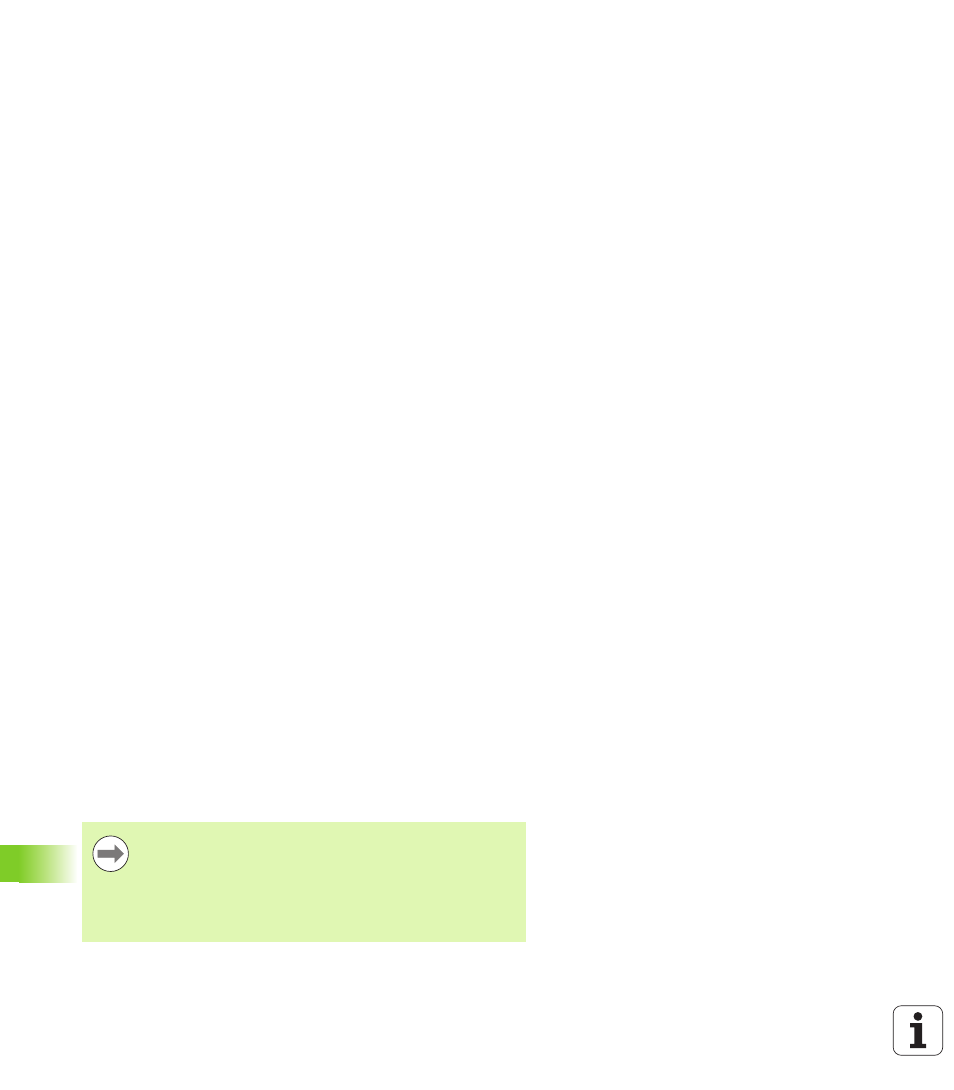7 measuring the tool length (cycle 481), Cycle run, Please note while programming – HEIDENHAIN TNC 128 (77184x-01) User Manual
Page 476

476
Touch probe cycles
20.7 Measur
ing the t
ool length (Cy
c
le 481)
20.7 Measuring the tool length
(Cycle 481)
Cycle run
To measure the tool length, program Cycle TCH PROBE 481. Via input
parameters you can select the desired type of measurement for
determining the length of a tool:
If the tool diameter is larger than the diameter of the measuring
surface of the TT, you measure the tool while it is rotating.
If the tool diameter is smaller than the diameter of the measuring
surface of the TT, or if you are measuring the length of a drill or
spherical cutter, you measure the tool while it is at standstill.
If the tool diameter is larger than the diameter of the measuring
surface of the TT, you measure the individual teeth of the tool while
it is at standstill.
Cycle for measuring a tool during rotation
The control determines the longest tooth of a rotating tool by
positioning the tool to be measured at an offset to the center of the
touch probe and then moving it toward the measuring surface of the
TT until it contacts the surface. The offset is programmed in the tool
table under Tool offset: Radius (TT: R_OFFS).
Cycle for measuring a tool during standstill (e.g. for drills)
The control positions the tool to be measured over the center of the
measuring surface. It then moves the non-rotating tool toward the
measuring surface of the TT until it touches the surface. To activate
this function, enter zero for the tool offset: Radius (TT: R_OFFS) in the
tool table.
Cycle for measuring individual teeth
The TNC pre-positions the tool to be measured to a position at the side
of the touch probe head. The distance from the tip of the tool to the
upper edge of the touch probe head is defined in offsetToolAxis. You
can enter an additional offset with tool offset: Length (TT: L_OFFS) in
the tool table. The TNC probes the tool radially during rotation to
determine the starting angle for measuring the individual teeth. It then
measures the length of each tooth by changing the corresponding
angle of spindle orientation.
Please note while programming:
Before measuring a tool for the first time, enter the
following data on the tool into the tool table TOOL.T: the
approximate radius, the approximate length, the number
of teeth, and the cutting direction.
You can run an individual tooth measurement of tools with
up to 20 teeth.